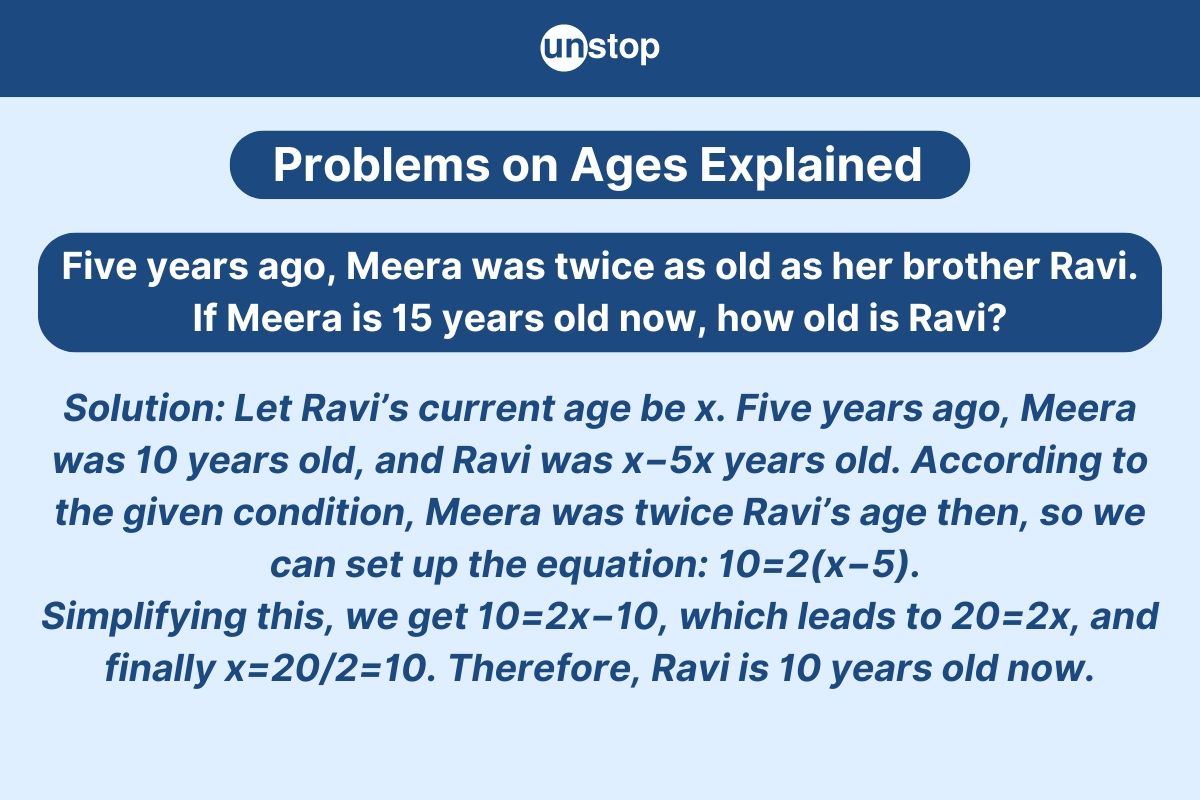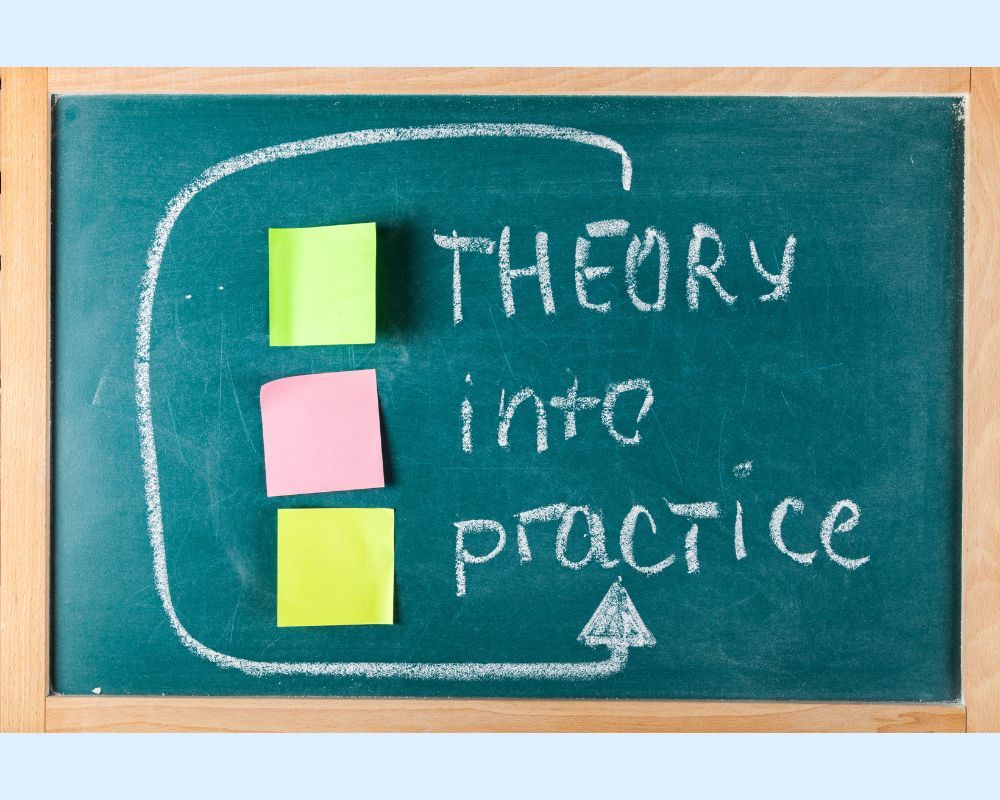- Step 1: The Groundwork
- Step 2: The Three Sections
- Step 3: Practice Makes Improvement
- The Secret Ingredient
- Understanding Basics Of Number Series
- Types Of Number Series Reasoning Questions
- Addition & Multiplication In Number Series
- Square & Cube-Based Number Series Patterns
- Missing Terms & Arranging Sequences
- Tricks & Tips For Solving Number Series
- Selected Number Series Questions With Solutions
- Frequently Asked Questions (FAQs)
- Must Know Terminologies in Blood Relation Questions
- Basic Approaches to Solve Blood Relation Questions
- Types Of Blood Relation Questions
- Tips For Solving Blood Relation Questions
- Multiple Choice Questions (MCQs) with Detailed Explanation
- Conclusion
- Frequently Asked Questions (FAQs)
- Letter Series In Logical Reasoning
- Types Of Letter Series Patterns
- Tips For Solving Letter Series Reasoning
- Best Practice Question Samples With Answers
- Conclusion
- Frequently Asked Questions (FAQs)
- Basics of Problems On Age-Related Questions
- Formula to Solve Problems on Ages-Related Questions
- Types of Age-Related Questions & Examples
- Tips & Tricks for Solving Ages Problems
- Best MCQs on Problems on ages with solved answers
- Conclusion
- Frequently Asked Questions (FAQs)
- Definition of Calendar
- Understanding Days of the Week
- What is a Leap Year?
- Concept of Odd Days in a Century
- Tips For Solving Calendar Reasoning Questions
- Best Calendar Reasoning Questions with Answers (MCQs)
- Frequently Asked Questions (FAQs)
- Basic Concepts of Clock
- Structure of a Clock
- Angle Equilavalence in Clock
- Tips For Solving Clock Questions
- Selected Clock Questions & Answers (MCQs)
- Conclusion
- Frequently Asked Questions (FAQs)
- Understanding The Concept Of Direction Sense
- Tips For Effective Problem-Solving In Direction Sense
- Practical Test Practice Questions And Answers
- Conclusion
- Frequently Asked Questions (FAQs)
- Importance Of Dice Reasoning
- Dice Numbers In Dice Reasoning
- Classification Of Dice
- Constructed Vs Deconstructed Dice
- Tricks & Tips For Solving Dice Problems
- Practice MCQs With Detailed Answers
- Conclusion
- Frequently Asked Questions (FAQs)
- Alphanumeric Series Defined
- Alphanumeric Series In Reasoning Tests
- Tips & Strategies For Solving Alphanumeric Series
- Practice Sample Questions With Detailed Answers
- Conclusion
- Frequently Asked Questions (FAQs)
- Concept Of Mirror Image Reasoning Explained
- Important Terms In Mirror Image Reasoning
- Types Of Mirror Images
- Identifying Correct Mirror Image
- Finding Clock's Mirror Image
- Tips To Solve Mirror Images
- Selected Practice Questions With Answers
- Conclusion
- Frequently Asked Questions (FAQs)
- Concept & Overview Of Input-Output
- Input-Output In Competitive Exams
- Types Of Input-Output Problems
- Strategies, Tips & Tricks For Solving Reasoning Questions
- Selected Practice Questions With Answers
- Conclusion
- Frequently Asked Questions (FAQs)
- Importance Of Finding The Odd One Out
- Tricks And Tips
- How to Find The Odd One Out?
- Solved MCQs with Detailed Explanation
- Conclusion
- Frequently Asked Questions (FAQs)
- Understanding Key Concepts
- Exploring Different Ranking Types
- Formula And Application Of Order And Ranking
- Tips For Solving Order & Ranking
- Selected Practice Questions And Answers
- Conclusion
- Frequently Asked Questions (FAQs)
- Importance Of Pipes & Cistern Aptitude
- Key Terminologies used in Pipes and Cisterns
- Pipes and Cisterns Formula with Examples
- Pipes and Cisterns Shortcut Tricks
- Tips For Solving Pipes & Cistern Problems
- Selected Questions & Answers For Practice (MCQs)
- Conclusion
- Frequently Asked Questions (FAQs)
- Key Concept in Boats and Streams
- Formulas Of Boats & Streams
- Distance & Time Formula
- Tips For Solving Boats & Streams Questions
- Selected Practice Questions With Answers (MCQs)
- Conclusion
- Frequently Asked Questions (FAQs)
- Concept of Mixture and Alligation
- Types Of Alligation Questions
- Formula for Solving Mixture & Alligation
- Tips For Solving Mixture And Alligation
- Selected Questions With Answers For Practice
- Conclusion
- Frequently Asked Questions (FAQs)
- Concepts and Definitions Related to Time and Work
- Important Time And Work Formulas
- Tricks and Tips to Solve Time & Work Questions
- Time And Work MCQs with Detailed Solution
- Conclusion
- Frequently Asked Questions (FAQs)
- What is Harmonic Progression(HP)?
- Formula to find the nth Term in Harmonic Progression
- Formula to find the Sum of the nth Term in HP
- What is Harmonic Mean?
- Harmonic Progression Solved Best MCQs
- Conclusion
- Frequently Asked Questions (FAQs)
- What is Mensuration in Maths?
- What are 2D figures in Mensuration?
- What are 3D figures in Mensuartion?
- Basic Terminologies In Mensuration
- Basic 2D Formulas in Mensuration
- Basic 3D Formulas in Mensuration
- 2D vs 3D in Mensuration
- Solved Questions With Solutions (MCQs)
- Conclusion
- Frequently Asked Questions (FAQs)
- Relationship Between Time, Speed And Distance
- Conversion Units Time, Speed And Distance
- Average & Relative Speed: Two Trains Moving in the same or opposite direction
- Solved MCQs on Time, Speed And Distance
- Conclusion
- Frequently Asked Questions (FAQs)
- What is Simplification in Maths?
- BODMAS Rule in Simplification Explained
- Simplification & Approximation Relation
- Key Terms in Simplification
- Examples Of Simplification Techniques
- Simplification Questions With Solved Answers (MCQs)
- Conclusion
- Frequently Asked Questions (FAQs)
- Height And Distance Important Terms
- Right Angled Triangle In Trigonometry
- Trigonometric Ratios
- Solved Examples For Better Understanding
- Height And Distance Applications In Trigonometry
- Height And Distance Practice Questions & Answers
- Conclusion
- Frequently Asked Questions (FAQs)
- Defining Interest Types
- Simple Interest Vs. Compound Interest
- Selected Solved Questions & Answers
- Conclusion
- Frequently Asked Questions (FAQs)
- Basic Concepts Of Profit And Loss
- Determining Selling Price
- Calculating Discounts
- Formulas For Calculating Profit And Loss
- Examples Of Profit And Loss
- Profit & Loss Questions With Detailed Solution
- Conclusion
- Frequently Asked Questions (FAQs)
- Defining Angle Of Elevation
- Key Terms Used In Angle Of Elevation
- Angle of Elevation Formula with Example
- Angle of Elevation vs. Angle of Depression
- Angle of Elevation MCQs with Answers
- Conclusion
- Frequently Asked Questions (FAQs)
- Defining HCF And LCM
- Calculation Methods Of HCF And LCM
- HCF By Prime Factorization Method
- LCM By Prime Factorization Method
- Difference Between HCF And LCM
- HCF & LCM Practice Questions With Answers
- Conclusion
- Frequently Asked Questions (FAQs)
- What is fraction and decimal?
- Understanding Decimal Fraction
- Place Value in Decimal Fraction
- Mathematical Operations with Decimal Fraction
- Practice with Solved Examples
- Summary
- Frequently Asked Questions
- All About Decimals
- All About Fractions
- How to Convert a Decimal into Fraction
- Simple vs Recurring Decimals
- Converting Recurring Decimals to Fractions
- Conversion Charts
- Practice Questions (With Solutions)
- Closing Thoughts
- Frequently Asked Questions
- What is Arithmetic Mean?
- Arithmetic Mean Formula- Ungroup Data & Group Data
- Merits of Arithmetic Mean
- Demerits of Arithmetic Mean
- Alternatives to Arithmetic Mean
- What is the Weighted Arithmetic Mean?
- Arithmetic vs. Geometric Mean
- Arithmetic Mean Application in Statistical Analysis
- Arithmetic Mean Practice Questions with Explanation
- Frequently Asked Questions
- What is Geometric Progression?
- Key Properties of Geometric Progression
- General Form Of Geometric Progression
- General Term or the Nth Term of Geometric Progression
- The sum of nth Terms of GP
- Types Of Geometric Progression
- Solved Questions and Answers of GP
- Conclusion
- Frequently Asked Questions (FAQs)
- Average in Maths
- Average Formula in Maths
- Differentiating Types of Average
- How to Calculate Average of Negative Numbers?
- Practical Applications of Averages
- Average Questions For Practice
- Frequently Asked Questions
- What is Simple Interest in Maths?
- Simple Interest Formula Explained
- Simple Interest Formula for Years, Months & Days
- Simple Interest Examples & Practice Questions
- Conclusion
- Frequently Asked Questions (FAQs)
- Defining Mathematical Ratios
- Understanding Proportions Fundamentals
- Differentiating Ratios from Proportions
- Ratio and Proportion Formulas
- Properties of Ratio and Proportion
- How to Solve Ratio and Proportion Problems
- Ratio and Proportion Problems (With Solutions)
- Summary
- Frequently Asked Questions
- What is Number in Maths?
- Types of Numbers With Example
- Real vs Complex Numbers Explored
- Basic Operations on Numbers
- Practice Questions (With Solutions)
- Frequently Asked Questions
- What is Arithmetic Progression (AP) in Maths?
- Important Terminologies in Arithmetic Progression
- Basic Terms in Arithmetic Progression
- General Form Of Arithmetic Progression Series
- Types Of Arithmetic Progression
- Solved Questions With Explanation (MCQs)
- Conclusion
- Frequently Asked Questions (FAQs)
- Understanding Basic Concept
- Importance Of Train Problems In Aptitude
- Tips To Solve Train Problems
- Selected Practice Questions & Answers
- Conclusion
- Frequently Asked Questions (FAQs)
- Definition Of Mode
- Calculating Mode For Ungrouped Data
- Calculating Mode For Grouped Data
- Bimodal, Trimodal & Multimodal Distributions
- Comparing Mean, Median & Mode
- Selected Practice Questions With Answers
- Conclusion
- Frequently Asked Questions (FAQs)
- Important Concept In Races And Games
- Calculating Time, Speed & Distance
- Importance Of Races And Games Problems
- Sample Practice Questions With Answers
- Conclusion
- Frequently Asked Questions (FAQs)
- Types Of Partnership
- Formula For Partnership Questions
- Tips To Solve Partnership Aptitude Questions
- Selected Partnership Questions (Practice MCQs)
- Conclusion
- Frequently Asked Questions (FAQs)
Problems on Ages: Selected Quantitative Aptitude MCQs & Solutions

Understanding the intricacies of age-related problems is crucial for honing mathematical skills and logical reasoning. This article will unravel strategies and tips to tackle age-related problems effectively, providing clarity and confidence in navigating such mathematical conundrums.
Basics of Problems On Age-Related Questions
To begin with, let us study the basics of problems on age-related questions:
Solving Equations
Age problems often involve solving equations to determine the ages of individuals. These equations typically require basic mathematical operations like addition, subtraction, multiplication, and division.
In addition to solving equations, logical reasoning plays a crucial role in age problems. You can deduce the unknown ages by analyzing the relationships between different individuals' ages based on the given information.
Formula to Solve Problems on Ages-Related Questions
Now, let us study the formula for solving problems on age-related questions:

Relative Age Difference
Understanding relative age differences is crucial in solving age problems. It helps compare the ages of two or more people.
Age-Related Problem Formula
A familiar formula used to solve age-related problems is the Age Difference Formula.
The formula is: Age Difference = Age of Person A - Age of Person B
For example, if Person A is 35 years old and Person B is 45 years old, the age difference would be:
Age Difference = 35 - 45= 10
Another formula, "Age = Current Year - Birth Year," is essential for quickly determining someone's age.
Types of Age-Related Questions & Examples
Let us study how problems on age can be categorized into different types:
Present Ages
In aptitude tests, questions often revolve around determining an individual's age. These problems require applying basic arithmetic operations to calculate the present age based on given information.
Future and Past Ages
Another common type of age-related question involves calculating future or past ages. Solving these problems requires understanding how time affects one's age over different periods.
Tips & Tricks for Solving Ages Problems
Let us study some of the tips and tricks for solving age problems:
Break Down
Break down complex problems on age into smaller parts to simplify the process. By dividing the problem into manageable sections, it becomes easier to understand and solve it step by step.
Logical Reasoning
Applying logical reasoning is crucial in solving problems related to age. By critically analyzing the given information, you can eliminate unrealistic scenarios and focus on viable solutions more efficiently.
Click here for all related quantitative aptitude study resources that ensure quality over quantity to enhance and upgrade your skills.
Best MCQs on Problems on ages with solved answers
Here, we provide you with some of the best and most relevant sample questions of problems on age with solutions for you to practice and understand:
Question 1. Josy is three times as old as his son Tomar. In ten years, Josy will be twice as old as Tomar. How old are Josy and Tomar currently?
Solution: Let's denote Josy's current age as J and Tomar's current age as T.
Josy is three times as old as Tomar, represented as J = 3T
In ten years, Josy will be twice as old as Tomar. In ten years, Josy's age will be J + 10, and Tomar's age will be T + 10.
This can be represented as: J + 10 = 2(T + 10)
We have two equations:
-
J = 3T
-
J + 10 = 2(T + 10)
Substitute the value of J from the first equation into the second equation: 3T + 10 = 2(T + 10)
Expand and solve for T:
3T + 10 = 2T + 20
3T - 2T = 20 - 10
T = 10
Find Josy's age: Using the first equation J = 3T and substituting T = 10
J = 3(10)
J = 30
Josy is currently 30 years old, and Tomar is currently 10 years old.
Question 2: Five years ago, Sneha was three times as old as Priya. In ten years, Sneha will be twice as old as Priya. How old are Sneha and Priya currently?
Solution: Let's denote Sneha's current age as S and Priya's current age as P.
Five years ago, Sneha was three times as old as Priya. This can be represented as: S - 5 = 3(P - 5)
In ten years, Sneha will be twice as old as Priya. In ten years, Sneha's age will be S + 10, and Priya's age will be P + 10. This can be represented as: S + 10 = 2(P + 10)
We have two equations:
-
S - 5 = 3(P - 5)
-
S + 10 = 2(P + 10)
Let's start by solving the first equation for S:
S - 5 = 3(P - 5)
S = 3(P - 5) + 5
S = 3P - 15 + 5
S = 3P - 10
Now, substitute the value of S into the second equation:
3P - 10 + 10 = 2(P + 10)
3P = 2P + 20
3P - 2P = 20
P = 20
Now that we have found Priya's age, we can substitute P = 20 into one of the equations to find Sneha's age.
Let's use the equation S = 3P - 10
S = 3(20) - 10
S = 60 - 10
S = 50
Sneha and Priya are currently 50 and 20 years old, respectively.
Question 3: Arjun is currently three times as old as Kavita. In ten years, Arjun will be twice as old as Kavita. How old are Arjun and Kavita currently?
Solution: Let Arjun's current age be represented by A and Kavita's current age be represented by K.
Arjun is currently three times as old as Kavita. This can be represented as A = 3K
In ten years, Arjun will be twice as old as Kavita. This can be represented as: A + 10 = 2(K + 10)
We have two equations:
-
A = 3K
-
A + 10 = 2(K + 10)
Let's substitute the value of A from the first equation into the second equation: 3K + 10 = 2(K + 10)
Now, let's solve for K:
3K + 10 = 2K + 20
3K - 2K = 20 - 10
K = 10
Now that we have found Kavita's age, we can substitute K = 10 into the first equation to find Arjun's age:
A = 3(10)
A = 30
Arjun is currently 30 years old, and Kavita is currently 10 years old.
Question 4: Mohan is 2 years older than Kapil, who is twice as old as Pillai. If the total ages of Mohan, Kapil, and Pillai are 27, then how old is Kapil?
Solution: Let's denote Mohan's age as M, Kapil's age as K, and Pillai's age as P.
Mohan is 2 years older than Kapil. This can be represented as M=K+2
Kapil is twice as old as Pillai. This can be represented as K=2P
The total of their ages is 27. This can be represented as M+K+P=27
We have three equations:
-
M=K+2
-
K=2P
-
M+K+P=27
Let's use the second equation to express K in terms of P: K=2P
Now, substitute this expression for K into the first and third equations: M=(2P)+2 [from equation 1]
M+(2P)+P=27 [from equation 3]
Simplify the equations:
-
M=2P+2
-
M+3P=27
Now, let's substitute the expression for M from equation 1 into equation 2:
2P+2+3P=27
5P+2=27
5P=25
P=5
Now that we have found P, which represents Pillai's age, we can use equation 2 to find Kapil's age: K=2P
K=2×5
K=10
Check the solution if our solution satisfies all the conditions given in the problem statement:
Mohan is 2 years older than Kapil:
M=K+2
M=10+2=12
Kapil is twice as old as Pillai:
K=2P
10=2×5
The total of their ages is 27:
M+K+P=27
12+10+5=27
Kapil is 10 years old.
Question 5: The sum of the ages of a son and father is 56 years; after four years, the age of the father will be three times that of the son. What is the age of the son and the father, respectively?
Solution: Let's denote the son's current age as S and the father's age as F.
The sum of the ages of the son and father is 56 years: S+F=56
After four years, the age of the father will be three times that of the son: (F+4)=3(S+4)
We have two equations:
-
S+F=56
-
(F+4)=3(S+4)
Let's simplify the second equation:
F+4=3S+12
F=3S+8
Now, substitute the expression for F from the second equation into the first equation:
S+(3S+8)=56
Now, solve for S:
4S+8=56
4S=56−8
4S=48
S=12
Now that we have found the age of the son, we can substitute S=12 into one of the equations to find the age of the father.
Let's use the first equation:
12+F=56
F=56−12
F=44
After four years, the age of the father will be three times that of the son:
(44+4)=3(12+4)
48=3×16
48=48
The son is 12 years old, and the father is 44 years old.
Question 6: Asha's father was 38 years of age when she was born, while her mother was 36 years old when her brother, four years younger than her, was born. What is the difference between the ages of her parents?
Solution: Let's calculate the current ages of Asha's parents.
Asha's father was 38 years old when Asha was born. So, if Asha is currently x years old, then Asha's father is currently 38+x years old.
Asha's mother was 36 years old when her brother, who is four years younger than her, was born. So, if Asha's brother is currently y years old, then Asha's mother is currently 36+y years old.
Now, since Asha's brother is four years younger than her, we have y=x−4.
So, Asha's mother's current age can be expressed as x as 36+(x−4)=32+x.
Now, we have the current ages of both parents as functions of x:
-
Asha's father: 38+x
-
Asha's mother: 32+x
To find the difference between their ages, we subtract:
(38+x)−(32+x)
38+x−32−x
38−32=6
So, the difference between the ages of Asha's parents is 6 years.
Question 7: What is the minimum age a father must have been when his son was born if he wants to ensure that he will be twice his son's age when his son turns 30?
Solution: The father wants to be twice his son's age when the son turns 30.
Let's denote the age of the father when the son was born as F (in years).
The age of the son when he turns 30 is 30 years.
At the time the son turns 30, the father should be twice the son's age.
We can write the equation as F+30=2×30.
Let's solve the equation:
F+30=60.
Subtract 30 from both sides:
F+30-30=60−30
F=30
The father must have been 30 years old when his son was born to ensure that he will be twice his son's age when he turns 30.
Question 8: Manju is currently twice the age of her sister, Mina. Six years ago, Manju was three times as old as Mina. How old are Manju and Mina now?
Solution: Manju's current age is twice the age of her sister Mina. Six years ago, Manju was three times as old as Mina.
Let's denote Manju's current age as M and Mina's current age as A.
Manju's current age is twice the age of her sister Mina: M=2A.
Six years ago, Manju was three times as old as Mina: M−6=3(A−6).
-
We have two equations:
-
M=2A (Equation 1)
-
M−6=3(A−6) (Equation 2)
-
Substitute the value of M from equation 1 into equation 2:
-
2A−6=3(A−6) 2
-
2A−6=3A−18
Rearrange the equation:
2A−3A=−18+6
−A=−12
A=12
Calculate Manju's age using
M=2A
M=2×12
M=24
Manju is currently 24 years old, and Mina is currently 12 years old.
Question 9: At present, Meera is three times the age of her younger sister, Radha. Six years ago, Meera was five times as old as Radha. How old are Meera and Radha now?
Solution: Let's denote Meera's current age as M and Radha's current age as R.
Meera's current age is three times the age of Radha: M=3R.
Six years ago, Meera was five times as old as Radha: M−6=5(R−6).
We have two equations:
M=3R -(1)
M−6=5(R−6) -(2)
Substitute the value of M from equation 1 into equation 2:
3R−6=5(R−6)
3R−6=5R−30
Rearrange the equation:
3R−5R=−30+6
−2R=−24
R=12
Calculate Meera's age using M=3R
M=3×12
M=36
Meera is currently 36 years old, and Radha is currently 12 years old.
Question 10: Sarah is currently 4 times as old as her daughter. In 10 years, Sarah will be twice as old as her daughter. How old are Sarah and her daughter currently?
Solution: Let's denote Sarah's current age as S and Sarah's daughter's current age as D.
According to the problem, Sarah is currently 4 times as old as her daughter: S = 4 × D
In 10 years, Sarah will be twice as old as her daughter: (S + 10) = 2 × (D + 10)
Now, we have a system of two equations:
Equation 1: S = 4 × D
Equation 2: (S + 10) = 2 × (D + 10)
First, let's use Equation 1 to express Sarah's age (S) in terms of her daughter's age (D): S = 4 × D
Now, we'll substitute this expression for S into Equation 2:
(4 × D + 10) = 2 × (D + 10)
Expanding the equation:
4D + 10 = 2D + 20
2D=10
D=5
So, Sarah's daughter is currently 5 years old.
Now, let's find Sarah's current age (S) using Equation 1:
S = 4 × D
S = 4× 5
S = 20
So, Sarah is currently 20 years old.
Sarah is 20 years old, and her daughter is 5 years old.
Conclusion
Mastering age-related problems is crucial for acing aptitude tests, especially those for government exams. Understanding the key concepts, formulas, and strategies discussed can significantly boost your problem-solving skills.
By practicing sample problems and honing your abilities, you're gearing up to tackle any age-related question that comes your way in these exams. Remember, practice makes perfect!
Quiz Time To Test Your Mind
Frequently Asked Questions (FAQs)
1. What are age problems in aptitude tests?
Age problems in aptitude tests involve determining the age of individuals based on given conditions like birth dates, events, or relationships.
2. How can mastering age problems benefit me for government exams?
Mastering age problems enhances your problem-solving skills and analytical thinking, which are crucial for scoring well in government exams that often feature such questions.
3. Why are key concepts and formulas important for solving age-related questions?
Understanding key concepts and formulas simplifies the process of solving complex age-related questions efficiently within a limited time frame during aptitude tests.
4. How can strategies and tricks help in solving age problems effectively?
Strategies and tricks provide shortcuts and techniques to approach different types of age-related questions quickly, improving accuracy and saving time during exams.
5. Where can I find sample practice problems on ages with solutions?
Sample practice problems for different ages with solutions are available online or in study materials specific to aptitude test preparation, helping you practice extensively before exams.
Suggested reads:
- Letter & Symbol Series Explained- Top Selected Question & Answer
- Blood Relation Questions Explained Using Selected MCQs & Answers
- Number Series: Top Selected Logical Reasoning Questions & Answers
- Seating Arrangement | Best Selected Sample Questions With Answers
- How To Become An Astronaut In India | Qualification & Requirement
Instinctively, I fall for nature, music, humor, reading, writing, listening, traveling, observing, learning, unlearning, friendship, exercise, etc., all these from the cradle to the grave- that's ME! It's my irrefutable belief in the uniqueness of all. I'll vehemently defend your right to be your best while I expect the same from you!
Login to continue reading
And access exclusive content, personalized recommendations, and career-boosting opportunities.
Subscribe
to our newsletter
















Comments
Add comment